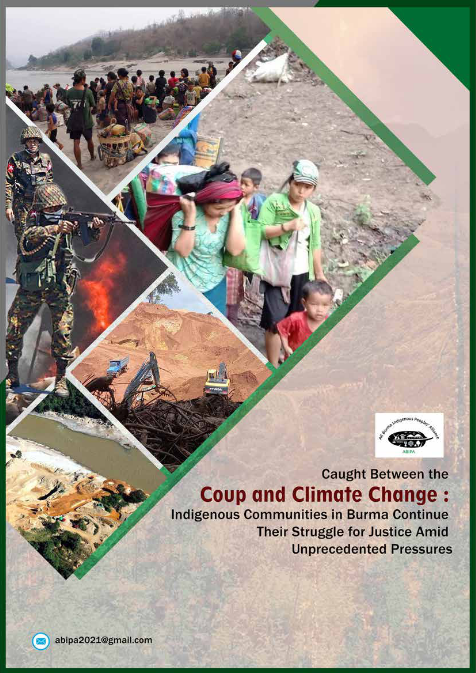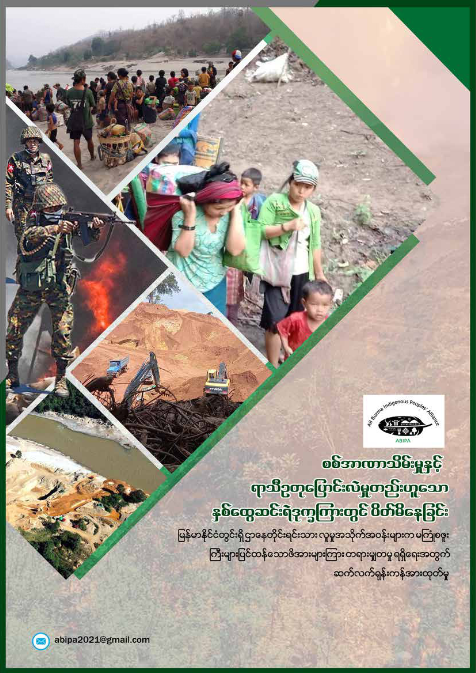Caught at the Crosshairs of the Climate Change and the Coup: Indigenous people in Myanmar Speak up on the Junta’s plundering of Myanmar’s Forests



Myanmar is a culturally and ecologically rich and diverse country, home to a vast array of biologically diverse ecosystems, from high altitude alpine forests and snowcapped mountains in northernmost Kachin State, to low elevation rainforests, mangroves and marine ecosystems in southern Tanintharyi Region. Myanmar’s wealth of natural resources and biodiversity are located almost exclusively in the territories of diverse Indigenous peoples, who have followed their own customary practices, institutions, and modes of collective action through which they have protected and sustained these landscapes. Relationships between local communities and their surrounding biodiversity remain strong to this day, and as a result Myanmar’s Indigenous peoples reside in some of the richest remaining biodiversity in South East Asia, however growing challenges to both indigenous communities and their territories now threatens this.
On February 2021, during the height of the COVID pandemic, the Myanmar Military staged a coup d’état, reversing the results of the 2020 general election, and detaining political leaders and activists across the country. Resultantly, huge protests broke out in cities, towns and villages throughout Myanmar, which were brutally suppressed by the military, causing a widespread non-violent resistance movement to give way to an armed revolution across the country. People from cities and towns mobilized into local defense forces that trained and sought shelter in the territories of Ethnic Resistance Organizations (EROs), resulting in a (re)ignition of military attacks, and bringing new waves of armed conflict, human rights abuses and crimes against humanity to the lands and forests of indigenous peoples, sites that have already seen decades of civil war.
To date over one million people have been displaced by the growing civil war, at least 50% of these are within indigenous territories. These regions have also become increasingly militarized, with road blocks and check points erected by the Myanmar military, restricting movement of local communities, and escalating violence creating an environment of fear. Escalating civil war has also given way to a conflict economy, in which natural resources are rapidly extracted, unfettered and unrestricted by rules, regulations and resistance. The results on Myanmar’s Indigenous peoples have been catastrophic, and they are now in a struggle for the survival of their lives, forests and territories.
Following the coup, over 20 months ago, Myanmar’s indigenous populations have seen rapid expansions of gold, tin and rare earth mining in their territories, as well as an explosion of unrestrained logging. As a result of the rapid expansion of resource extraction, communities have experienced their streams and rivers being dried up, their mountains logged and denuded, and their territories increasingly controlled and colonized by extractive companies, militias and the military. The closing of civic space and growing authoritarianism means that indigenous peoples and environmental defenders attempting to protect their forests and biodiversity from plunder are targeted, and faced with arrest, torture or death.
As the COP-27 commences in Egypt, another country marred by rising human rights abuses and authoritarian rule, indigenous leaders from Myanmar gather to tell the world of the unfolding human and climate catastrophe in their country. Their message is clear: without addressing the world’s most brutal, authoritarian and fascist regimes, the fight against climate change will not succeed.
Webinar

